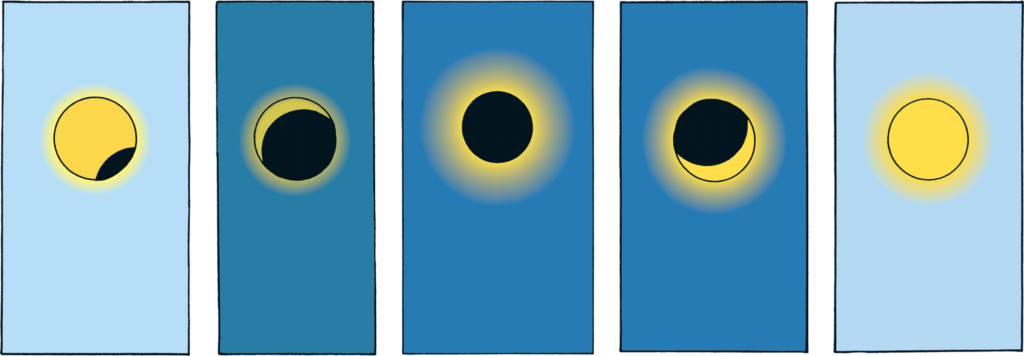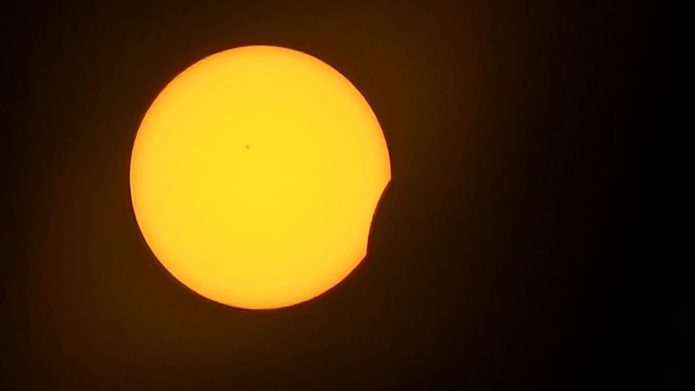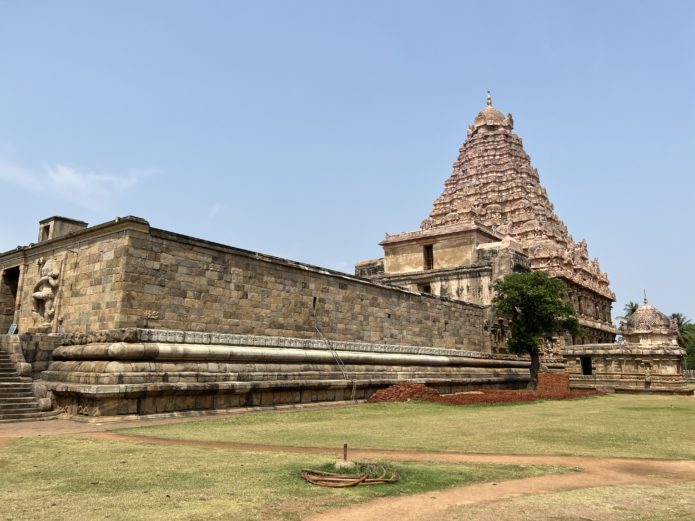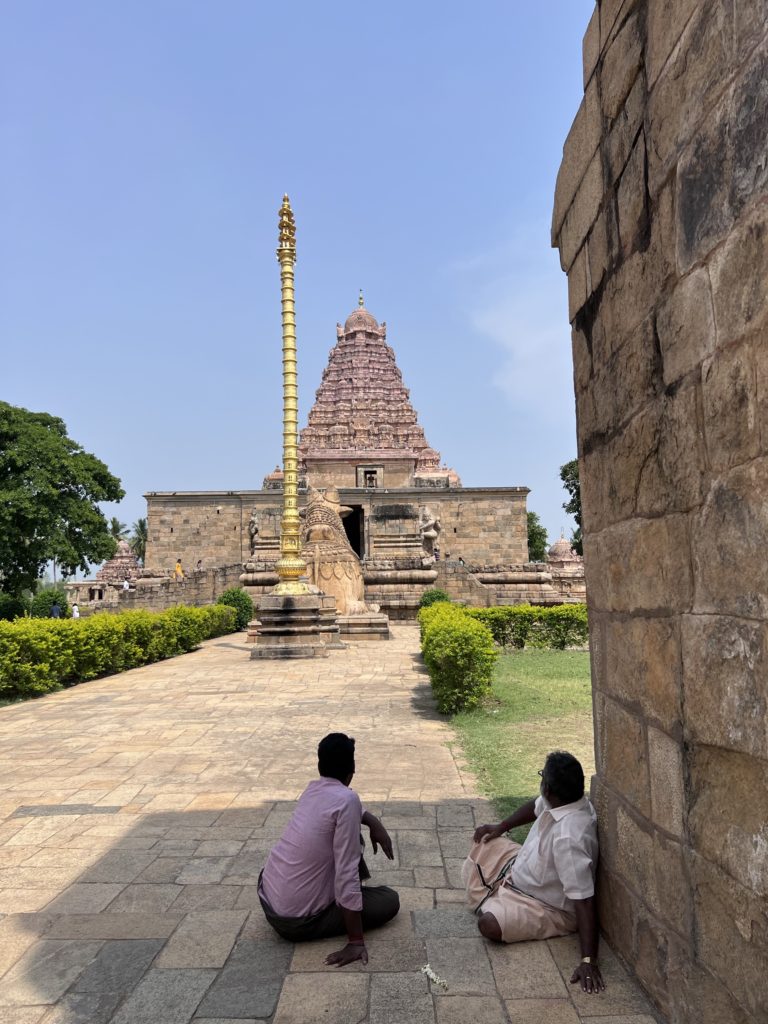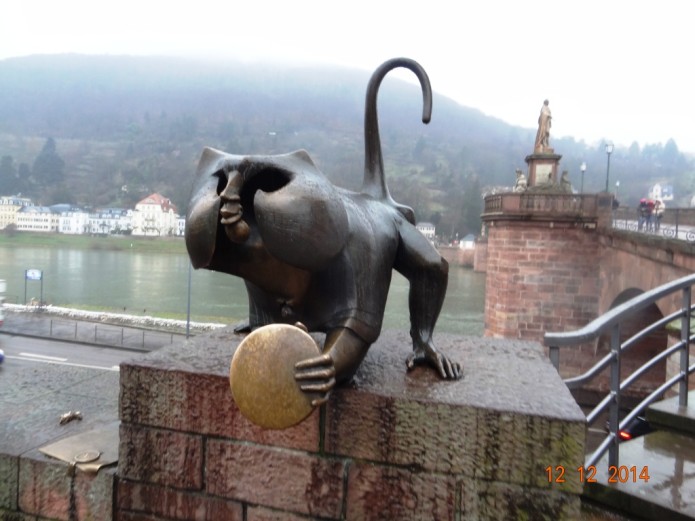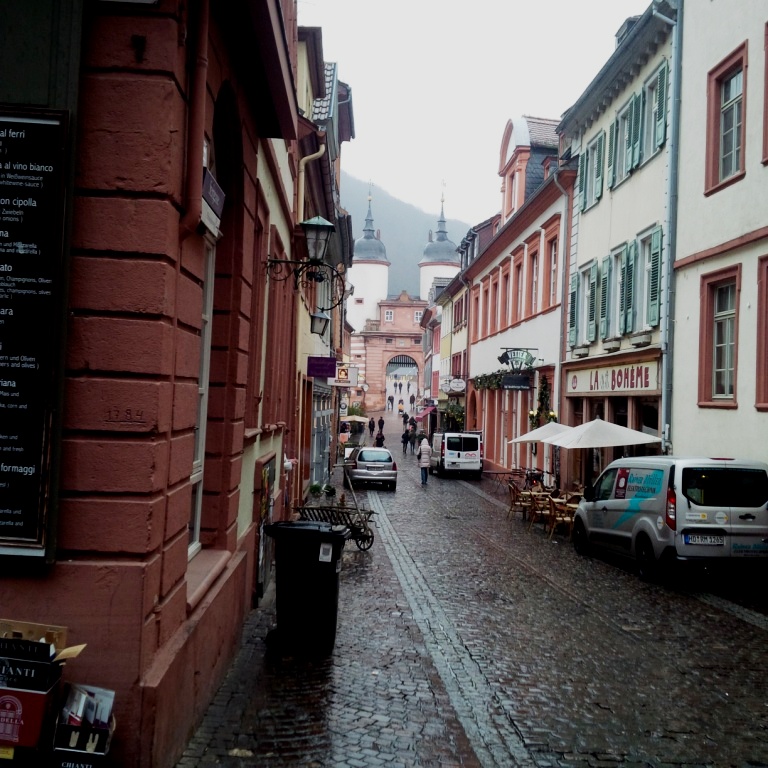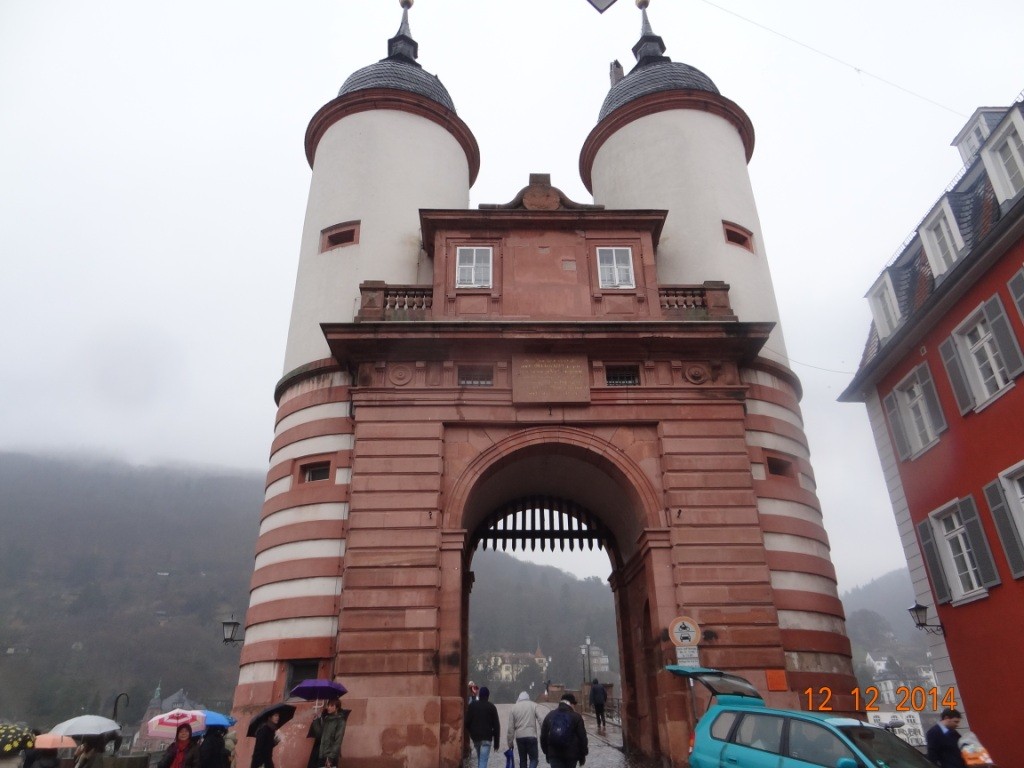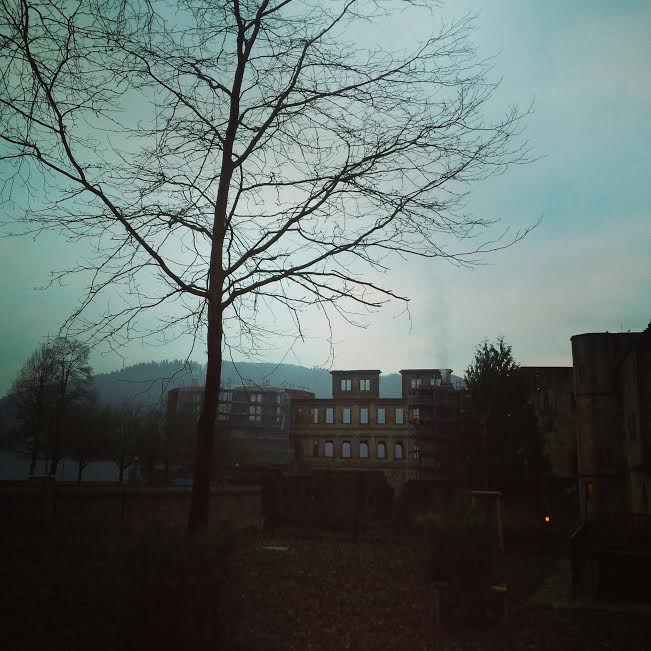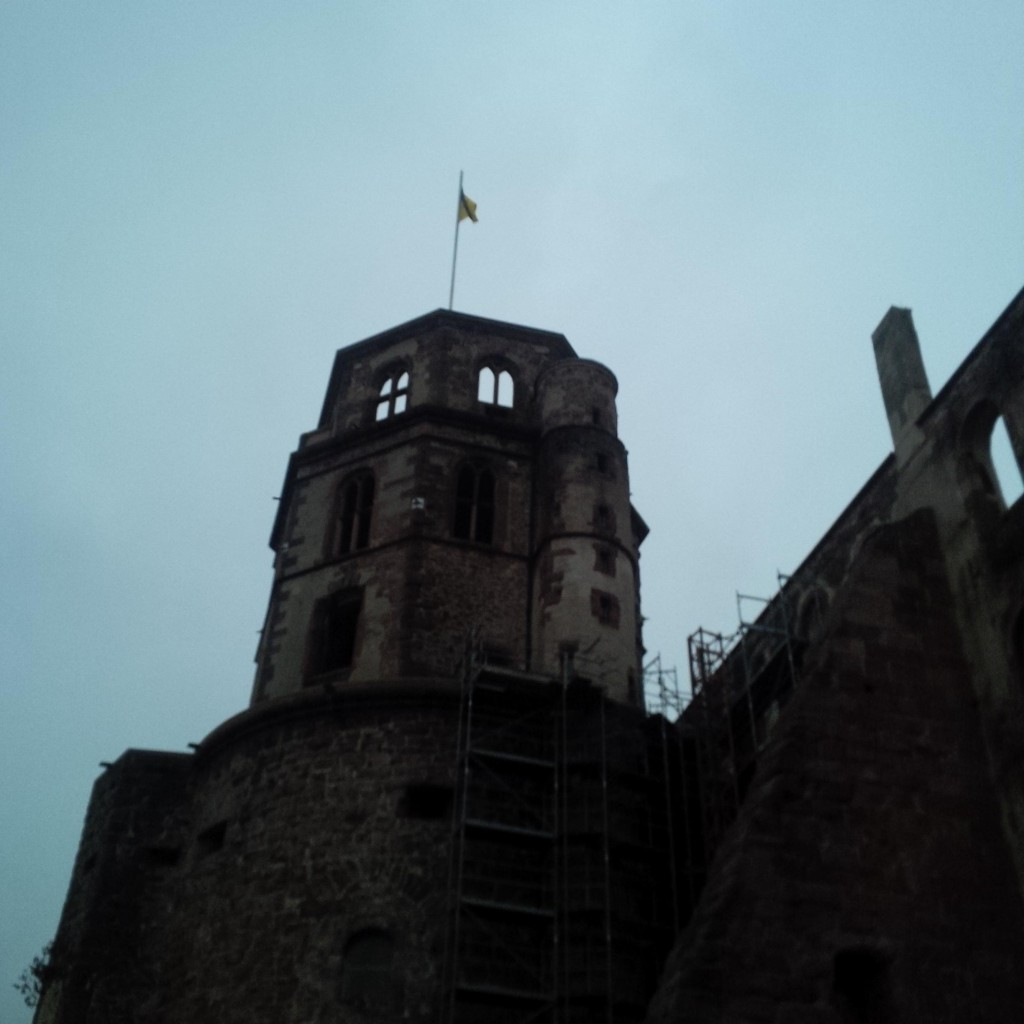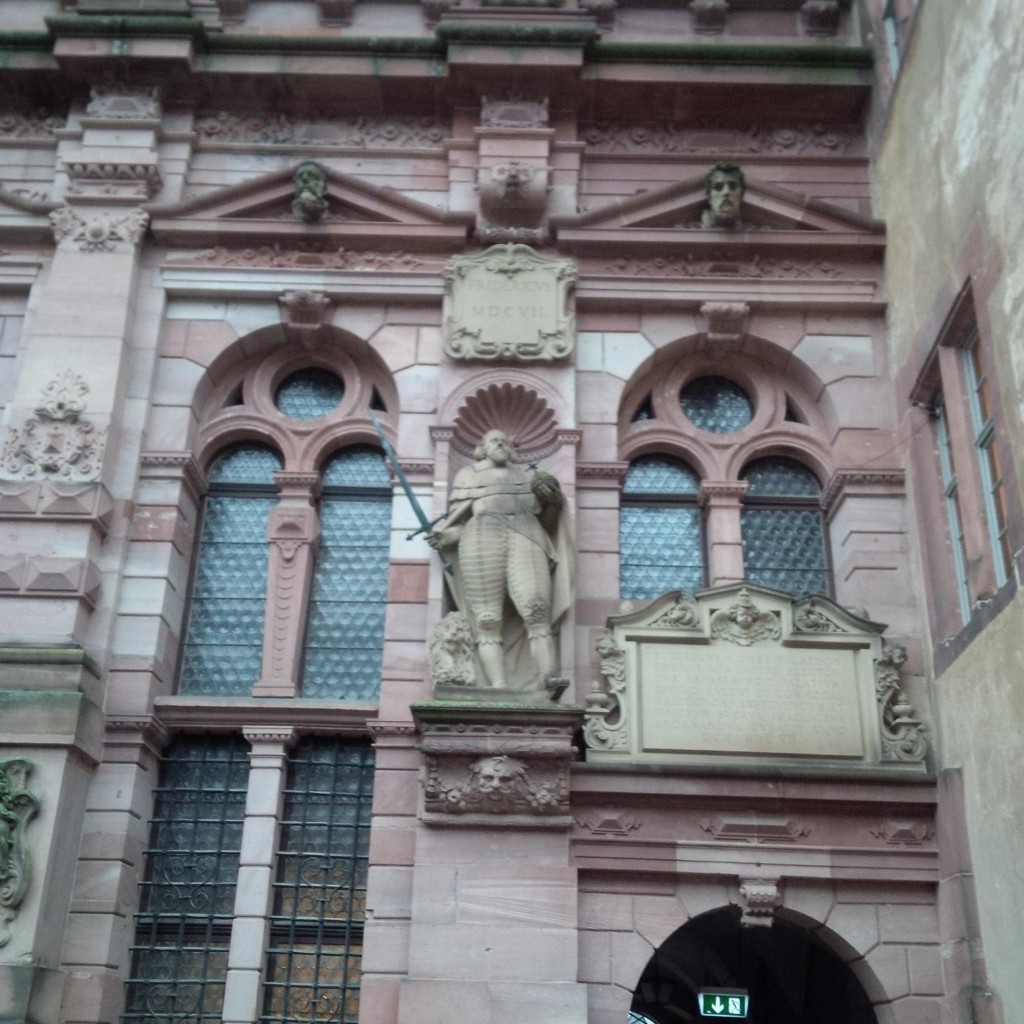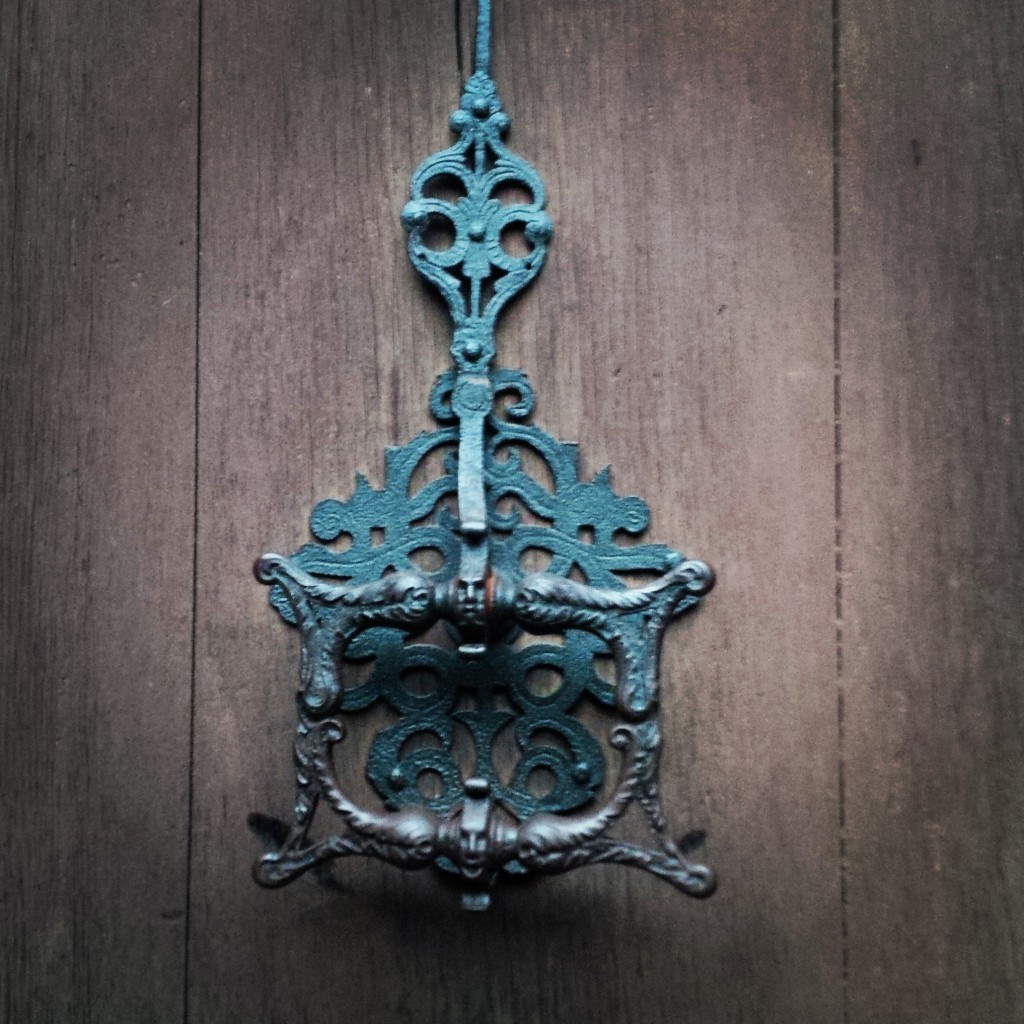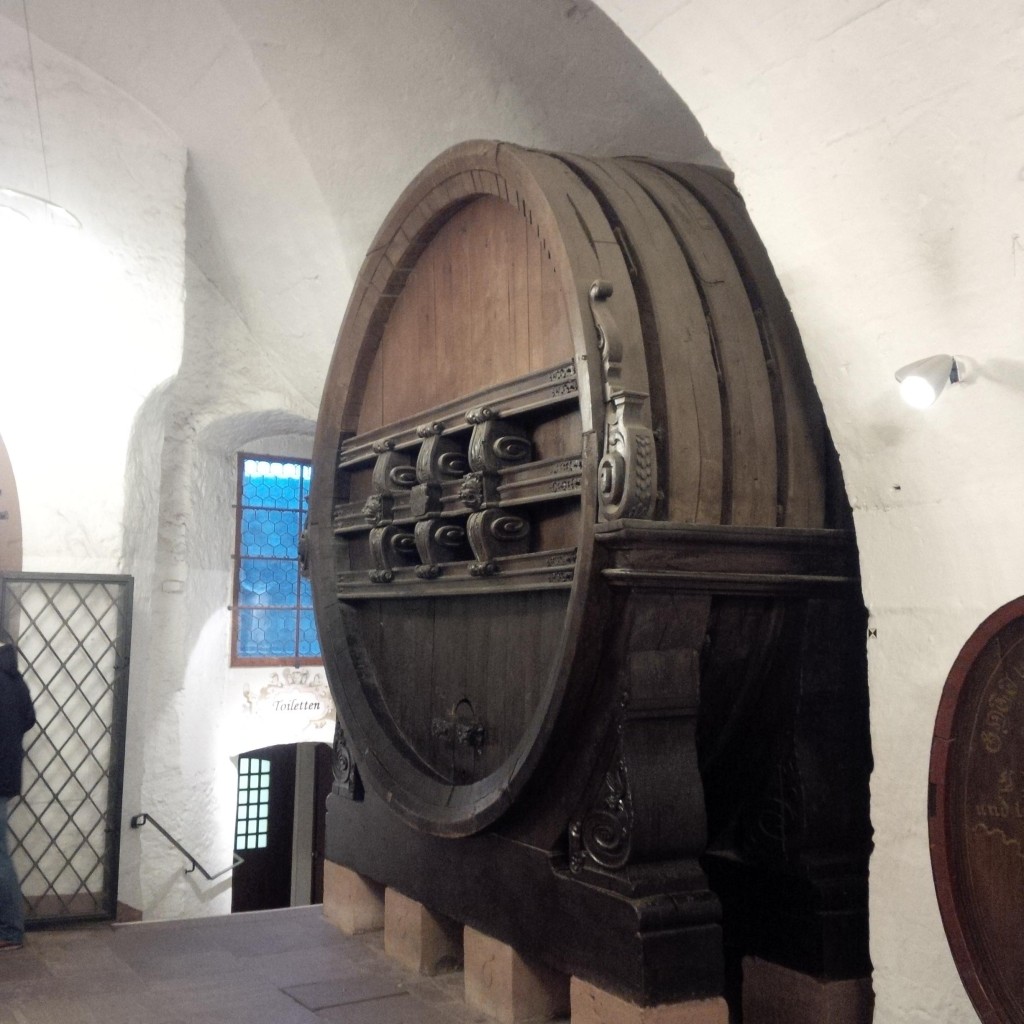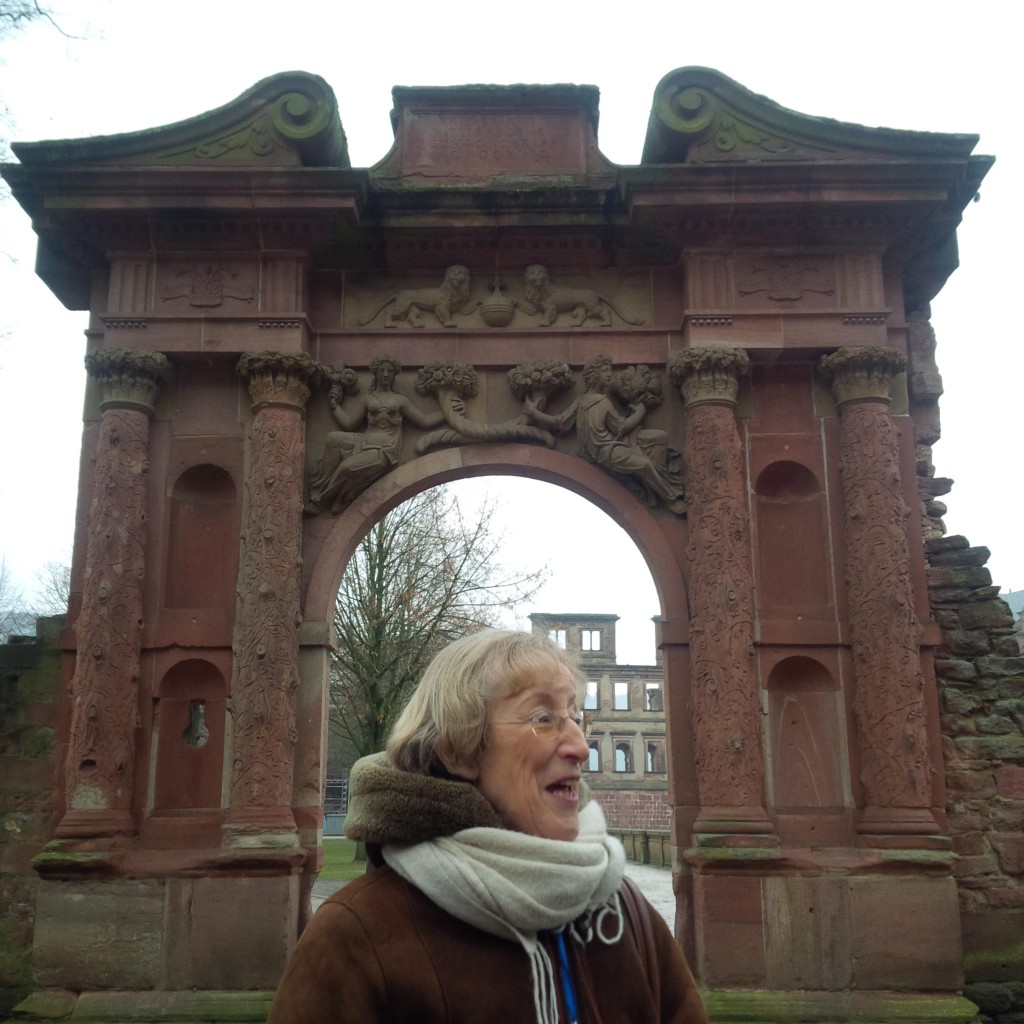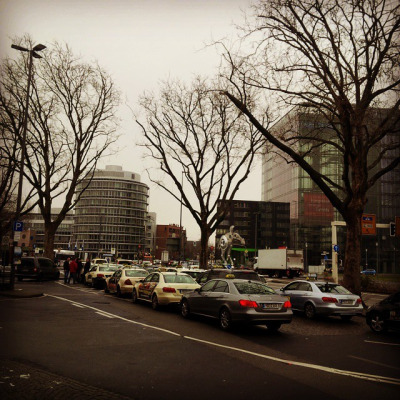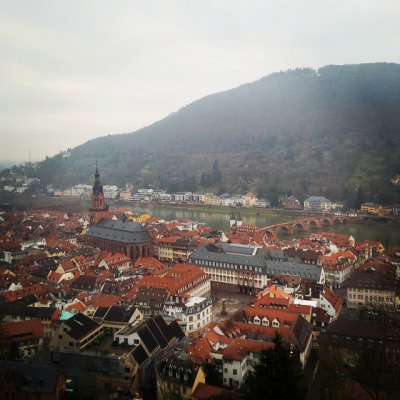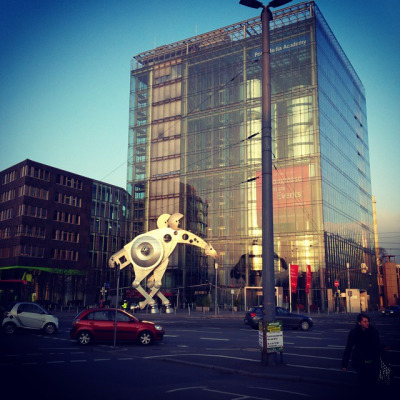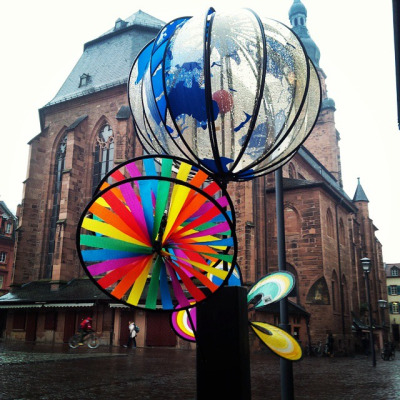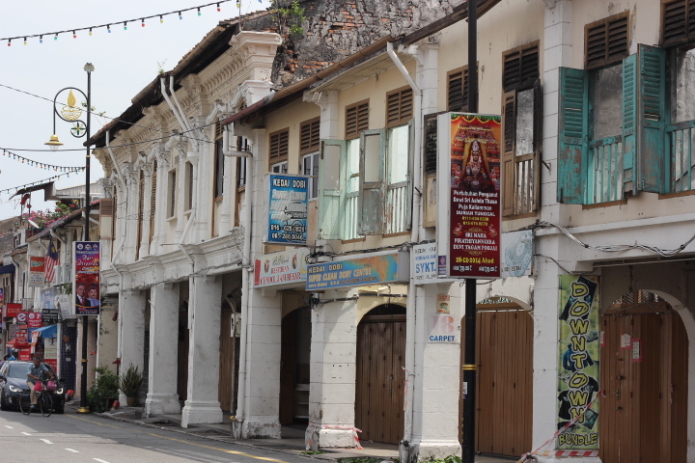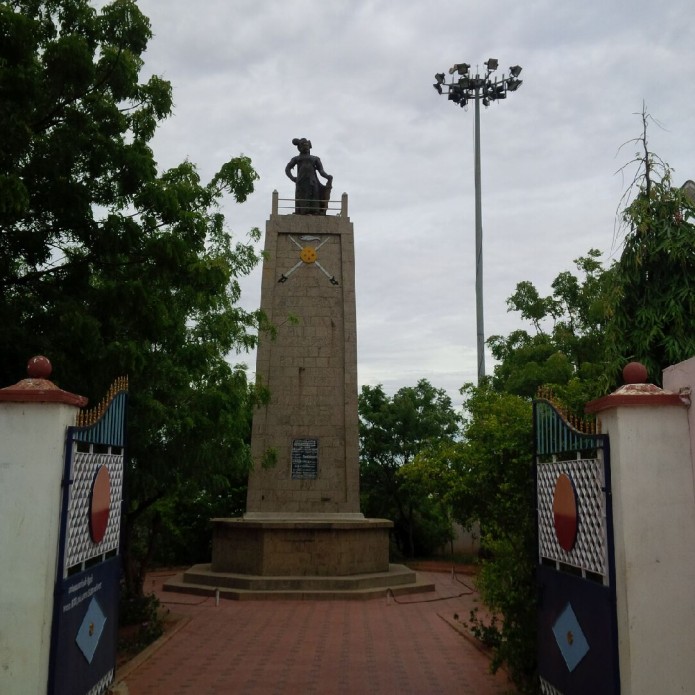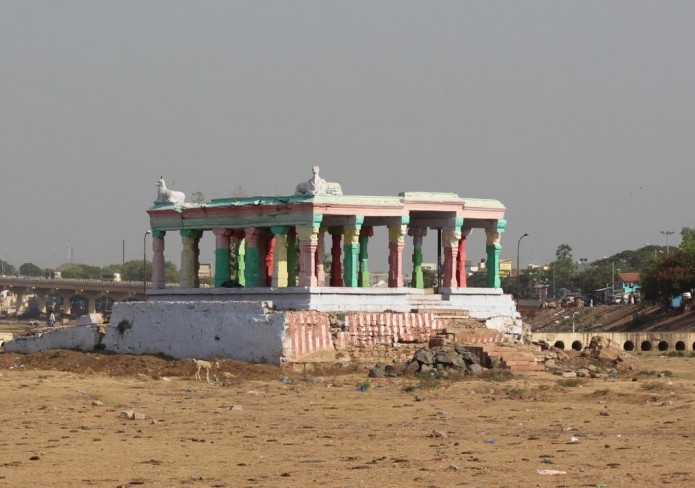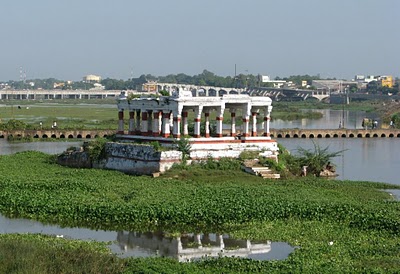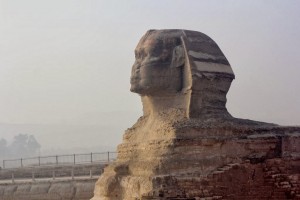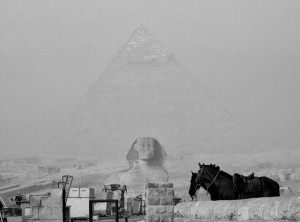From as long as I can remember, I have wanted to stop here and stare. A long hard look, if you will. During this trip to Tirunelveli, I did it.
On the outskirts of Tirunelveli, just by the highway, within the precincts of a small town called Kayatharu, stands a lonely memorial. Lonely, because I haven’t seen many people stop here. Further and lip sealing evidence of no one stopping here : there is zilch commercial activity in the vicinity. No aerated drinks. No cigarettes. No parking area. Not even the cursory entry fee.
That doesn’t take away anything from the simple yet elegant majestic bearing of the pedestal, carrying a couple of drawn swords, a shield and a man standing atop, who seems ready to jump at you. I almost missed the ‘fish’, which is the emblem of the Pandyas, sitting pretty between the swords.
This is the memorial of a King who lived from from 1760 to 1799. Katabomman. Or rather, Veerapandiya Kattabomman. His life and heroics, like several others, would have continued to be confined to the dark ravines of apathy, fueled by a concoction of ignorance, a surfeit of history and the monochrome schema of day to day existence.
Thank God for the eponymous Tamil movie, starring Sivaji Ganesan that was released in 1959. For those that don’t know, Sivaji Ganesan was an actor who could get his molars to twitch and incisors to dance, just to bring alive a situation on screen. Well, almost. The film won a slew of awards and contains some searing screenplay delivered by a belligerent Sivaji. Some of those dialogues were part of the paraphernalia for any elocution competition in school. The film world brought a king, his kingdom and his time alive. A couple of centuries after his death. Sometimes, one act can condone many ills. This was one such.
His memorial stood right beside the highway and I wonder why I didn’t stop for all these years. It is overcast today and the weather pleasant. So, under the aegis of a Sun who is playing truant, like a king who ceded his throne to the clouds, I enter tentatively.
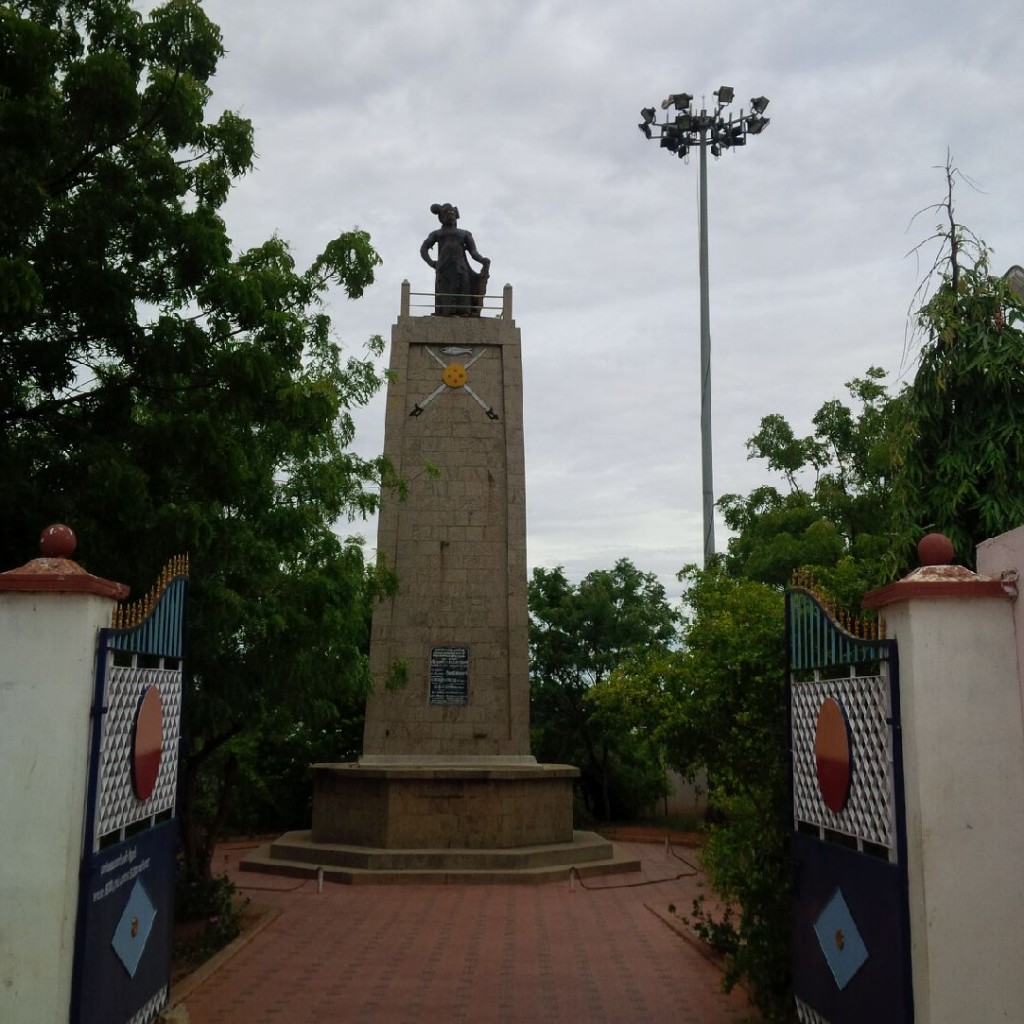
Within seconds, I become aware there is no one else there. Its just me. Never in my life I have had a memorial all to myself. I walk, conjuring solemn memories of watching the movie along with dad and my brother. The majestic single pedestal, an array of plants and even a small children’s play area, all stand silent. Wonderfully maintained. Which of course, was a surprise considering the absence of commerce.
In the next few minutes, I discover that the statue has been sponsored by Sivaji himself and opened by the Congress leader and former chief minister, K.Kamaraj. Sivaji sponsoring a statue of the hero of the film, who he played in the film, would sound like the height of astute self propagation, in modern day marketing terms. But, I doubt if that era had already seen the devious depths that we have sunk to now. Who knows!
I spot a line which states clearly that this after all the place where Kattabomman was hanged by the British. So, it wasn’t just a convenient location for a statue, but a place of importance after all.
The story went, as far as I could remember, Kattabomman was a valiant king, who refused to pay taxes to the British and fought them. He had initial wins but was later done in by fellow clan, was captured and naturally, executed in front of his subjects.
A king and his kingdom. It perhaps was something to become King then. I walk around, imagining how it would have been in 1799, to be a bristling 39 year old fighting the British army, in his own backyard. My faculties that normally facilitate imagination stay unresponsive and I let them be, content with the quiet. For some reason a lump forms in my throat, as the silence grows on me. Vaguely disrupted by passing vehicles on the highway and their blaring horns.
In a bit, I spot an inscription. I read it first with some awe and then with mild amusement. I reproduce it here. It was all in bold letters. That’s one change. And the only one at that.
“Katta Bomman, a great tamizh kind had power and it was visible, tangible and real for ever. A courageous king never bowed before autocracy. A dazzling hero and dashing warrior dissipated hypocrisy.
Among perfidious traitors, Katta Bomman had moving faith, miracle generating faith, situation changing faith, displayed patriotism, pacifism, pragmatism and humanism whipped off the the then calculative, crafty cruel kingdom.
Friends, no, dastardly Ettappans only betrayed him to English royalty, never Katta Bomman deviated from fairness, justness probity and nobility. The lower he fell, the higher he bounced back with vitality, had reverberating, resilient and unshakable, devotion to Lord Muruga only.
Sowed the seed of freedom and earned the eternal fame. Sowed the seed of fortitude and hushed the needless shame. Shimmered as a radiant light and roared as a lion before the then collectors, shone martyr, alas, Katta Bomman was hanged because of the traitors. – D. Chandrasekaran. I.A.S. Chennai. “
I pulled out my white handkerchief, rubbed my eyes and started reading again. To carefully craft in stone stuff of this order, would require inordinate courage of the order that Kattabomman possessed. That was clear. But to go ahead, sign it and tag the Indian Administrative Service, took this to a different plane altogether.
I stood for ten minutes speculating how such words would have sprouted. Perhaps this was literal translation from a speech. Maybe he was high. Or was promoted. Or was going to retire. Whatever.
Right next to the big stone inscription stood a smaller one. By the same D.Chandrasekaran, I.A.S, Chennai.
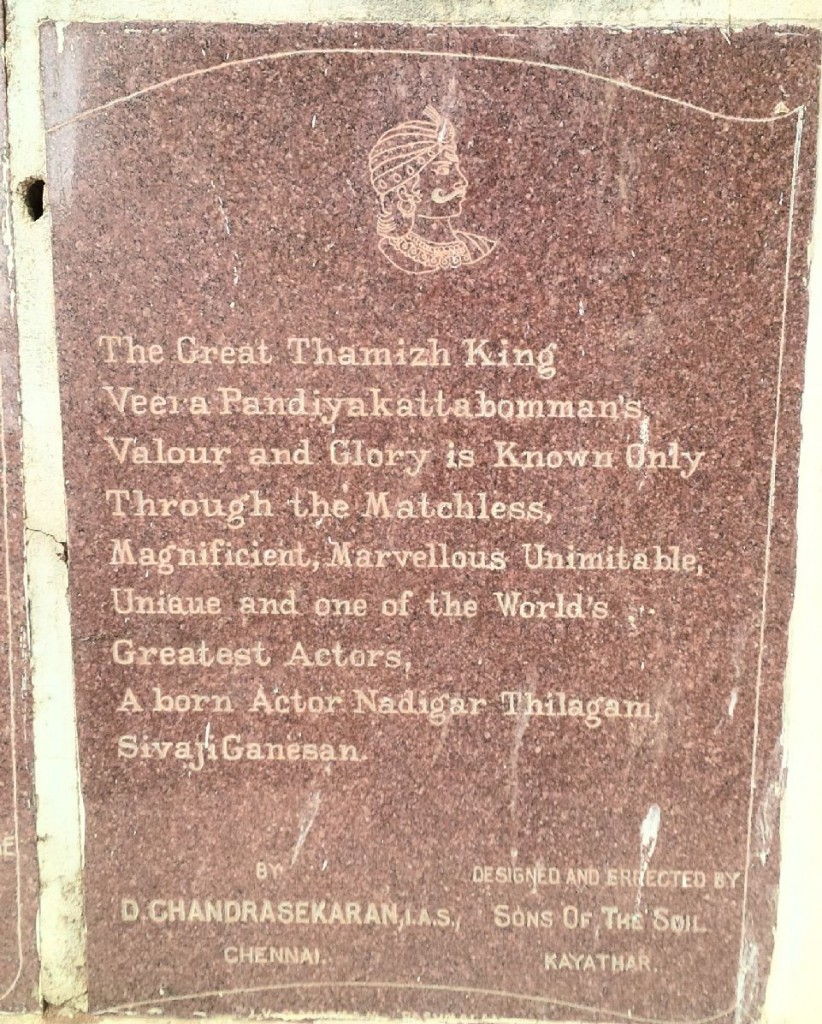
It sure looked like ‘adjectives’ were on short supply for a long time and suddenly, they went on a sale! The granite plaque provides some relief to the sombre mood. After all, it was the memorial that I came for. I train my eyes again on the statue that is majestic and seemed modeled on Sivaji the actor. Perhaps, there were very little of reference points.
I leave quietly. Without saying a word. There was no one to say anything to of course. But Kattabomman’s heroics and the stone inscription by D.Chandrasekaran I.A.S, Chennai, leave me tongue tied that I don’t want to pursue any conversation with anybody, even if someone was around. As I leave, I turn and take a long look. As Kattabomman stands tall, looking at the buzzing traffic almost with disdain. I tell myself he is entitled to that view. The disdain, that is.
Back home, I dig up some history. And read about how Kattabomman and others fought the Polygar wars much before the first War of Independence in 1857! Each page revealed a slice of history that I had abysmal clues about. I read about ancestors, descendants, tax structures and many elements that complete the richness of the picture. I sit there, sipping my filter Kaapi, thinking of what it must have been like to be a 39 year old king to be hung from a tree, in front of his subjects.
And then I think of D.Chandrasekaran, I.A.S, Chennai. The coffee seeps in to shake my inaction.
In one reflex action, I open my calendar on the phone and on the 16th October, I mark the death anniversary of Kattabomman. Silly, you may think. Some actions cant be explained. So, lets leave it there.
